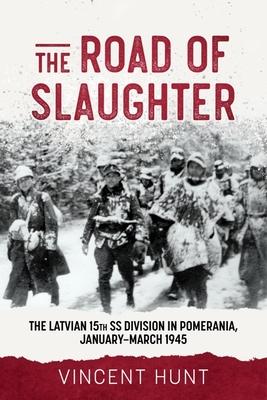Through new interviews, translated personal diaries and extracts from the 15th Division war diary - only found in 2006 and never before published - the harrowing stories of the Latvians in Pomerania can now be told.
In Arctic blizzards between January and March 1945, the Latvian 15th SS Division - a core of Russian Front veterans but most raw teenage conscripts from Nazi-occupied Latvia - tried to stop the Red Army sweeping across Pomerania, now Poland. One in three died: the majority never returned home. They became the lost Legion.
The author interviews the last remaining Latvian Legion-naires who came to the UK after the Second World War and follows their footsteps across modern Poland, adding many stories from Latvian archives, in English for the first time. Thrown in to strengthen Nazi defenses as German forces collapsed, the Latvians were constantly encircled and outgunned, outrunning the merciless T-34 tanks. It was kill or be killed: even the priests had Panzerfausts.
After battles at Nakel, Immenheim, Vandsburg, Kujan, Dorotheenhof and Flatow the Latvians retreated to Jastrow. Then came a four-day period known to the Latvians as ’the 15th Division’s Golgotha’ - the road of slaughter in the Polish countryside between Jastrow and Landeck [now Jastrowieand Lędyczek].
At Podgaje-Flederborn their column was trapped with refugees and the wounded on a single road, sitting ducks for Red Army gunners. The result was a massacre: up to 5,000 Latvian soldiers may have been killed here. What is certain, from these eyewitness accounts, is that it was appalling.
From Danzig to the Oder, this is the story of an exhausting seven-week retreat from certain death along roads choked with refugees, with danger lurking around every bend. Through new interviews, translated personal diaries and extracts from the 15th Division war diary - only found in 2006 and never before published - the harrowing stories of the Latvians in Pomerania can now be told.
English translations of the memoirs of officers Colonel VilisJanums, Major Jūlijs Ķīlītis, chaplain Kazimirs Ručs (later Monsignor) and many others bring vivid and often-shocking eyewitness testimony to events at Podgaje-Flederborn and Ledyczek-Landeck. The original orders from the ’Road of Slaughter’ are reproduced from the War Diary in the National Archives in Riga revealing a catalogue of chaos, confusion and carnage. The casualty lists make for sombre reading, as do accounts of disturbing incidents that warrant further investigation.
With chilling echoes of the modern conflict in Ukraine, this is an exhausting and blood-soaked seven-week retreat across Pomerania to the Baltic coast, culminating in a dramatic escape across the river Oder into Germany. Memoirs and autobiographies from Latvians who subsequently settled in Australia, Canada and the USA add new detail to this horrifying chapter.
The story of what happened once the Latvians crossed into Germany continues in the author’s forthcoming books.


 看圖書介紹
看圖書介紹




![塔木德:猶太人的致富聖經[修訂版]:1000多年來帶領猶太人快速累積財富的神祕經典 塔木德:猶太人的致富聖經[修訂版]:1000多年來帶領猶太人快速累積財富的神祕經典](https://media.taaze.tw/showLargeImage.html?sc=11100697818)




![不眠[首刷附錄版] 不眠[首刷附錄版]](https://cdn.kingstone.com.tw/book/images/product/20186/2018630712727/2018630712727m.jpg?v=4cb20)